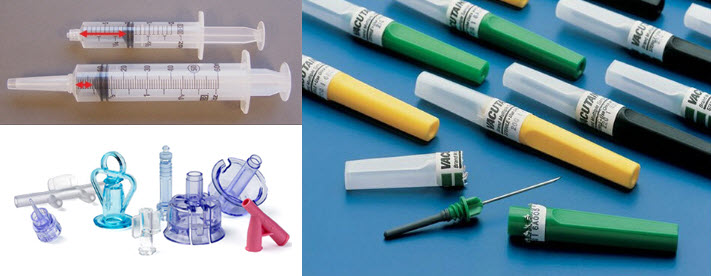Few Things You Probably Didn’t Know About Medical Injection Moldings
Plastics are increasingly used in the medical industry, owing to its properties, such as chemical resistance, light weight, autoclavability, transparency, and design flexibility. Plastic injection molding is the process used to manufacture different plastic products in the medical industry. Plastic injection molded products are widely used in a wide range of industries today. This is owing to the several benefits that the process offers, which include high efficiency, enhanced strength, detailed features, and ability to use multiple plastic types. Besides this, the process is automated, and helps save on manufacturing costs. All these factors have led to the growing usage of this technique in the plastic medical market, too.
The injection plastic molding process and medical industry share a very special relationship. A number of parts and devices in the medical industry are manufactured using the injection molding process. This process has the capability of producing a huge number of accurate medical devices, and that too at low unit costs. Another major benefit of using medical injection molding is that it provides design freedom. Thus, medical devices and parts with different shapes and sizes can be manufactured. Moreover, a vast choice of plastic materials is available for injection molding of medical devices. What are the applications of this process in the industry? Are there any specific standards required to be maintained in injection plastic molding? The answers to these questions are hidden in the following post. Read on to get these answers.
What are the Important Standards in Injection Plastic Molding for Medical Devices?
The companies providing plastic injection molding services are required to have certain certifications and registrations. This helps maintain the quality of operational controls and standards. Following are some most important standards, certifications, registrations necessary for injection plastic molding:
- FDA Registration – This registration carries utmost importance, when it comes to production and distribution of different medical devices that are to be commercially distributed in the US.
- ISO 13485:2003 (Now revised as ISO 13485:2016) – As per the ISO 13485:2016 standards, a company is required to validate that it is capable of providing medical devices and services associated with them. The standard also requires organizations to specify their ability to meet customer requirements regularly. It also specifies the quality management system in which the company is required to confirm its capability to meet regulatory requirements.
- Clean Room – This is another standard and has various classifications, such as:
- ISO 7 certified clean room – 10,000 particles per cubic foot
- ISO 8 certified clean room – 100,000 particles per cubic foot
What are the Application Areas of Injection Plastic Molding?
A number of medical devices are manufactured using the injection plastic molding technique. The following are some examples of medical devices manufactured with the help of this molding technique:
- EKG & oxygen parts
- Heart pump parts
- Catheters
- Orthopedic devices
- Fetal heartbeat monitors
- Custom Knee braces
Devices and parts used in the medical industry are precision manufactured with the help of this molding process. However, it is always an important consideration to avail molding services from a well-known and experienced manufacturer. Brogan Patrick is one such expert manufacturer and an experienced injection molding service provider in the US.

